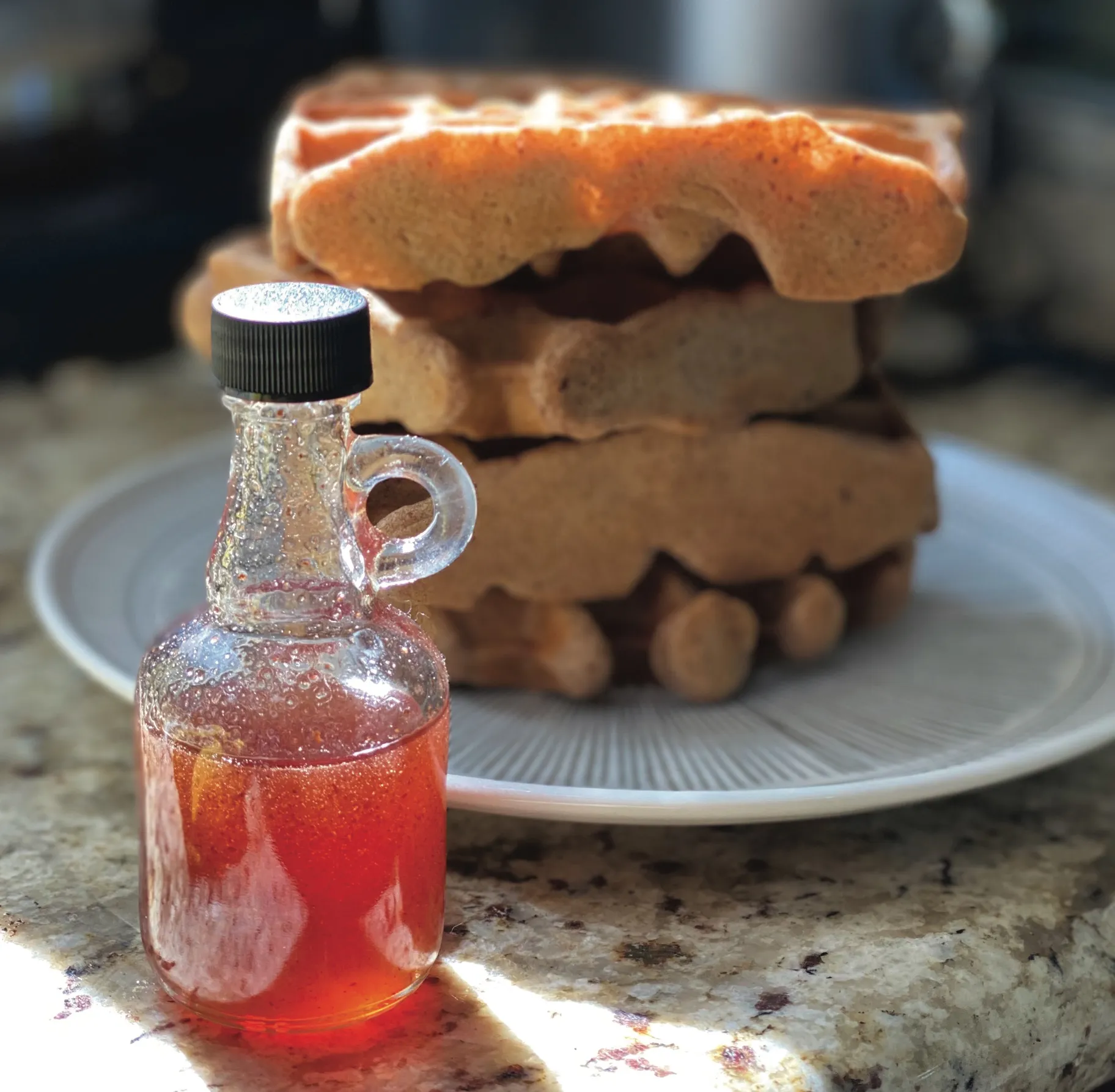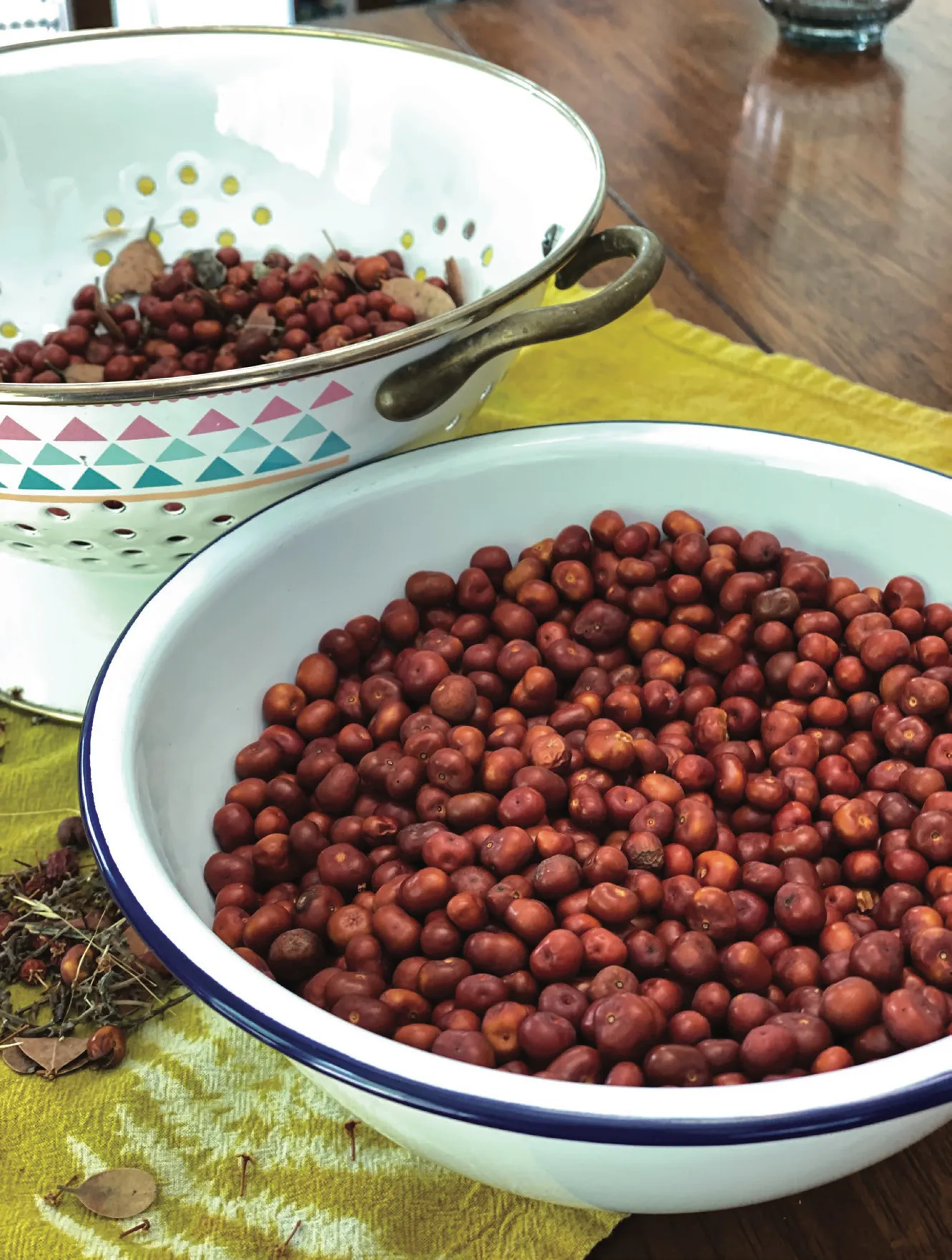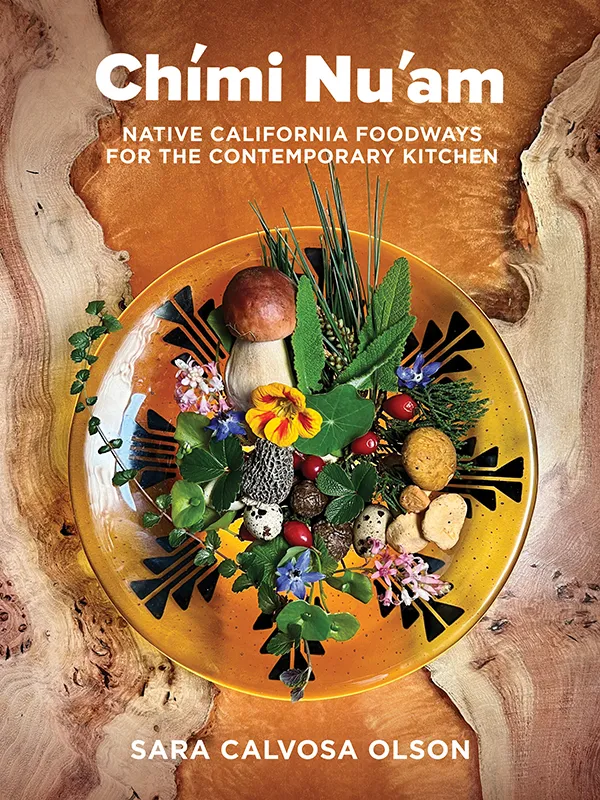Connecting with nature is an approach to cooking that is often overlooked — but not for Sara Calvosa Olson. A native Californian raised by a Karuk mother, she is leading people on a path to decolonize their diets, one cup of manzanita flour at a time. As a passionate home cook, she is working to stay connected to her family and roots through food sovereignty. Her recent cookbook is Chími Nu'Am: Native California Foodways for the Contemporary Kitchen.
KCRW: Where did you grow up?
Sara Calvosa Olson: Hi, ayuqui. I grew up on Hoopa lands along the Trinity River in Northern California, either on or very near the Hoopa reservation.
Share with us a little bit about your heritage.
Well, my mother is Karuk, and my father is of Calabrese Italian descent. There's this collision of traditional foods and that Italian vibe and home-cooking techniques that come together.
I love that. What does Sara mean in Karuk?
Sara means bread in Karuk. I know that it was not intentional, but I feel that it was really prescient because I have always felt drawn to cooking and to food and showing my love that way. And I love carbs. So I feel like that was really a special naming.

The flour made from manzanita berries, which are powdery rather than juicy, adds a light apple flavor to waffles. Photo by Sara Calvosa Olson.
You note in the book that many people divide the state into two regions, Northern California and Southern California. But how do native ingredients change across the state? And when do foodways intersect?
Our state is very bio regionally diverse. One of the things that I think is really interesting is that there are some foods that carry from pretty much every single tribe, our acorn tribes here in California. But as you move into the mountains, you have different flora and fauna as you would on the coast and in the desert regions. We also had a very robust trading system with each other. There were many, many trading centers throughout California and much of our roadways are built on those trading centers and trading roads.
Where I am from, there are many tribes that were in the Klamath River Valley. Let's talk about the three main tribes — the Hoopa that are in the middle between the Yurok and the Karuk. The Karuk are upriver people, the Yurok are the downriver people. The Yurok and the downriver people that would be at the mouth of the Klamath would have different things to eat and trade than the people a few miles up the river, where my people are from. We would trade often with each other to make our diets even more varied and exciting.
In Southern California, they have different types of flora and fauna down there and different influences from Southwest tribes and from the Mexico and Baja areas as well. So they would have mesquite or chia, even tepary beans, which are an Indigenous bean that grows in really dry and rocky outcroppings. We have this enormous, nuanced variety of foods all over, the best foods that you could even imagine in California.
When you go to a fancy restaurant, they have things like venison, rabbit, quail eggs, chanterelles, wild mushrooms, even abalone. These are all traditional foods for native peoples. To see them on these fancy menus, I feel like there should be access to this for everybody. But these were our food so it made me realize wow, we really did have these incredible, nuanced, vibrant foodways throughout our communities.
You said the word acorns. We can't talk about California native culture without talking about the acorn. Can you describe the taste of acorns?
Acorns have a lot of variable flavor, texture and composition between themselves. A tan oak acorn is an acorn that's highly prized by my tribe, in particular, as the sweetest acorn. It is also very high in tannins. Tannins can be used to cure animal hides for clothing and blankets and stuff. There are other acorns throughout California that have higher contents of fat or starch, so they can have different flavors and different uses and applications.
Tan oak is something you can use if you really want to taste the acorn, the really earthy, almost floral sweetness of an acorn. But it requires leaching, so it requires processing. Once you have leached out all of the bitterness from the tannins, you're left with this earthy, floral, hinting-at-sweet flavor. Black oak acorns as well, I think, are very sweet. White oak acorns are sweet. I really like baking with valley oak acorns. They have more of a deep earthiness, a soil minerality that seems to me to go well in breads and savory applications, focaccia, things like that.

Tannins in acorns can be used to cure animal hides for clothing and blankets. The acorns themselves vary widely in terms of flavor, texture and composition, depending on the type. Photo by Sara Calvosa Olson.
Aside from using acorn flour, another flour that you use is manzanita flower. What is that made from and how is it used?
Yes, manzanita is really interesting. It grows on the manzanita bush, the little berries. Manzanita means little apple. They definitely have a nice appley flavor in the berry. The berry is unique because it isn't a juicy berry, it's a powdery berry, and it has very large seeds on the inside. It has better application as a flour when you break into the berry and separate it from the seeds. Mixing it in as a sweetener for baked goods gives it that kind of sweet appley flavor.
Let's talk about fall. In many California native cultures, what is the significance of this transitional period, from summer to colder weather? And what are some of the keystone foods that are available during the season?
In the fall period, is the Karuk new year. It is the beginning of the year, so we have a lot of celebrations. There's a return of the salmon in the fall and we do a lot of our traditional dances and ceremonies at this time of year to celebrate and encourage and honor the return of the salmon up the river. This is also historically a time of abundance. The fish would be running, the acorns would be falling, there would be pepper nuts and late summer blackberries and all of the squashes and things that are available at this time of year. So it really is a time of abundance, celebration and gratitude.
It was also historically a time for cultural burning. I say cultural burning, but I really mean it in a sense of stewardship and not that it was just ceremonial. It had a purpose. The term "Indian Summer" comes from all of the native people in California doing this prescribed burning around the state and all the little fires that would cause smoke to be in the air. The soil moisture at this time is usually great for doing this prescribed fire.

How should non-Indigenous cooks and eaters decolonize their diets? "Taking small but urgent steps and starting with one thing," says native Californian Sara Calvosa Olson. Photo by Nelia Marshall Photography.
What are some of the small steps that non-Indigenous cooks and eaters can take to decolonize our diets?
I think it's always going to be about small steps. That's really the mindset that everybody should have — taking small but urgent steps and starting with one thing. Pick one thing that you see around you in your backyard or one particular native ingredient, native plant, native food (native to your backyard, to your area) and learn all there is to know about it. How can you use it, gather it? How is it traditionally prepared? Are there still native people doing subsistence gathering in your area? How did they traditionally prepare and use it? Is it endangered? Can you grow it yourself? Taking very small, intentional steps, one thing at a time, I think is what everybody can do. And we need everybody to engage in this way, so that's how I hope people start.

Chími Nu'Am: Native California Foodways for the Contemporary Kitchen helps home cooks embrace native ingredients. Photo courtesy of Heyday.
Acorn Manzanita Waffles
Serves 4
I know this is a lot to write about in a simple waffle mix recipe, but it speaks to how valuable it is to be in relationship with our community and our foodways, and how our cuisine doesn’t just nourish our bodies, it also deepens our relationships with one another, with our plant relatives, and with our own spirits. Not every meal is going to be a profound moment of reconnection or decolonization, but once we start incorporating these foods into our everyday lives, even the bittiest pancake can feed us in unexpected ways.
The baking mix can be used for pancakes as well as waffles. The manzanita lightly sweetens the mix and gives it an appley essence. (In fact, manzanita means little apple in Spanish.)
Ingredients
Baking Mix
- 1 ½ cups all-purpose flour
- 4 ½ tablespoons powdered milk
- ½ cup acorn flour
- ½ cup manzanita flour (see page 40)
- 1 tablespoon baking powder 1 teaspoon salt
Acorn Waffles
- 2 cups baking mix
- ¾ cup water
- 1 egg
- 1/3 cup melted butter
Suggested Toppers
- Fresh berries or sliced fruit
- Manzanita flour mixed with powdered sugar
- Pure maple syrup
Instructions
-
To make the baking mix: In a medium bowl, combine all the dry ingredients and set aside.
-
To make the waffles: Turn on the waffle iron to heat it up. In a small bowl, combine the water, egg, and melted butter. Add this to the baking mix and stir to combine.
-
Once the waffle maker is warmed up, pour the amount of batter into it according to the manufacturer’s instructions. Mine uses about 3⁄4 cup. When the waffle is cooked through, repeat with the remaining ingredients. Enjoy the waffles with your favorite toppers.
